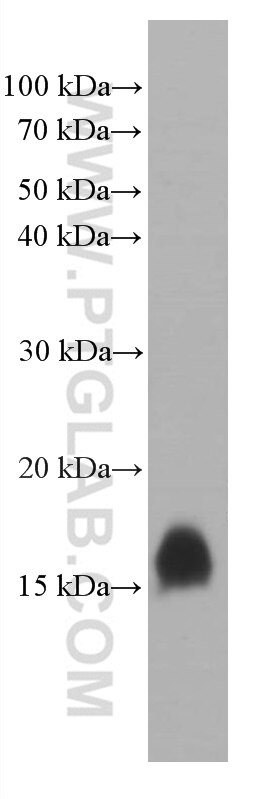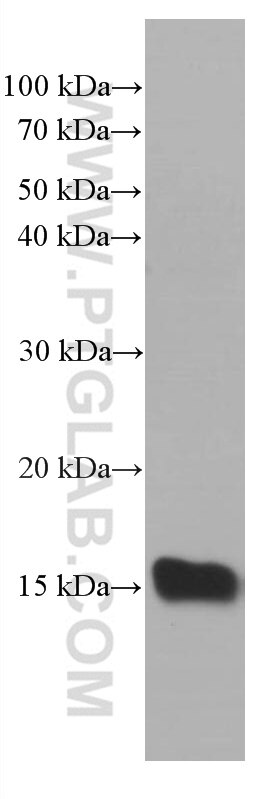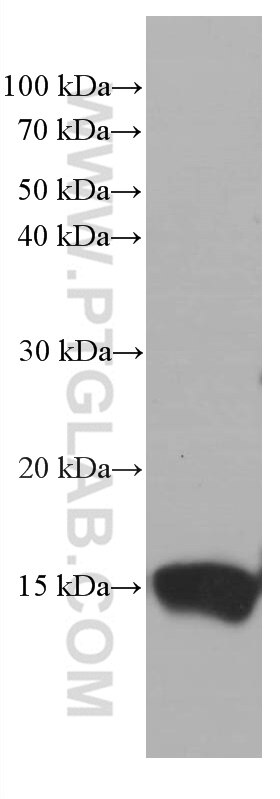Tested Applications
| Positive WB detected in | rat pancreas tissue, pig pancreas tissue, pig stomach tissue |
Recommended dilution
| Application | Dilution |
|---|---|
| Western Blot (WB) | WB : 1:1000-1:6000 |
| It is recommended that this reagent should be titrated in each testing system to obtain optimal results. | |
| Sample-dependent, Check data in validation data gallery. | |
Product Information
66471-1-Ig targets TFF2 in WB, ELISA applications and shows reactivity with human, pig, rat samples.
| Tested Reactivity | human, pig, rat |
| Host / Isotype | Mouse / IgG2a |
| Class | Monoclonal |
| Type | Antibody |
| Immunogen | TFF2 fusion protein Ag18765 Predict reactive species |
| Full Name | trefoil factor 2 |
| Calculated Molecular Weight | 129 aa, 14 kDa |
| Observed Molecular Weight | 16 kDa |
| GenBank Accession Number | BC032820 |
| Gene Symbol | TFF2 |
| Gene ID (NCBI) | 7032 |
| RRID | AB_2881837 |
| Conjugate | Unconjugated |
| Form | Liquid |
| Purification Method | Protein A purification |
| Storage Buffer | PBS with 0.02% sodium azide and 50% glycerol , pH 7.3 |
| Storage Conditions | Store at -20°C. Stable for one year after shipment. Aliquoting is unnecessary for -20oC storage. 20ul sizes contain 0.1% BSA. |
Background Information
The trefoil factor family (TFF), comprises of three polypeptides, TFF1, TFF2 and TFF3 (7-12 kDa), secreted to mucosal surfaces by mucus producing cells, prominently in the gastrointestinal tract. TFF2, also known as spasmolytic polypeptide, is a low-molecular weight protein, expressed in mucous neck cells of the fundus and glands at the base of the antrum in normal human stomach. TFF2 could Inhibit gastrointestinal motility and gastric acid secretion. However, recent studies suggest that TFF2 could also play an important role in the immune system.
Protocols
| Product Specific Protocols | |
|---|---|
| WB protocol for TFF2 antibody 66471-1-Ig | Download protocol |
| Standard Protocols | |
|---|---|
| Click here to view our Standard Protocols |







